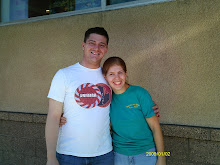As one of the last outings for the kindergarten kids this year, Teacher Grace and I agreed to a trip to the AmorePacific Museum, a local athenaeum built by Korea's leading health and wellness company.
AmorePacific, one gathers from the corporation's prestinely polished website, was started in the 1940's by the founder's mother as she manufactured and sold hair oil out of her home. This seeded her young boy's brain with thoughts of ways to preserve and care for one's aging skin, beginning a lifelong pursuit of beauty. As the website claims, Sung-Hwan Suh later established his company "on the belief that indigenous Asian botanicals... hold the secret to overall wellness and healthy skin" (http://us.amorepacific-cosmetics.com/brand/brand_story.jsp). From that conviction, he then saught to increase his influence and bring his products to the global market.
When she first introduced me to the idea, Grace had called it a "cosmetic museum." A what? Wouldn't that be like Mary Kay opening up a showroom and populating it with powder cases and pink Cadillacs, not in order to purchase products but to show off her successes for the last fifty years? It was an odd concept, to be sure--a repository specifically devoted to a posh makeup brand. As we didn't seem to have that type of consumerist libaries back in the States, I was quite at a loss for what this was. But as museums are purported storehouses of learning, I didn't have to wait long to be enlightened.
The first plaque I came to, after the kids had settled into their Indian-style circle on the floor to listen to the pleasant chirp of their Korean history tutor, outlined the museum's statement of purpose. "It was our calling to bring to people's attention the forgotten women's culture and the Korean tea culture," I read in bold black letters wall-papered to the partition. The mention of tea culture threw me for a loop, as there was no contextual evidence for more than a passing interest in tea anywhere in the room.
Yet here was something interesting: preserving Korean women's culture by way of cosmetics. How was it that a makeup company could be so interested in history? By most American standards, that set-up alone would lend itself to be awfully one-sided. Perhaps I missed the message behind the menagerie, however. Maybe the focus was broader--not just on women, not just on history, but on beauty itself. The writer of the display clearly penned her purpose for her readers with her closing line: "I hope you will discover the everyday beauty [around you] by tracing the finger marks left behind by our ancestors."
Indeed, what I saw on display certainly measured up to be such: ornate, overly elaborate hairpins used for decorating women's heavy wigs; silver powder boxes inlaid with plum blossoms, the seal of royalty; and heavy dangling jewelry made of jade, amber, and coral. In the other two salons, relics of equal beauty graced us with their smooth ceramic forms or shiny laquered finish--all familiar, ordinary objects used in household tasks like grooming and tea-time. Yet this was precisely at the core of the museum's stated mission: not to display "artists' work," as the writer-on-the-wall put it, but to see what beauty lies at the core of what seems mundane. "It is our belief," she concludes, "that beauty... is part of our lives."
Here the students roam through the furniture selection, which displayed only the ornamented craftwork pieces found in the women's rooms--"warm and magnificent in accordance with women's tastes."
Examples of jewelry and accessory craft
Vanity sets from the Joseon Dynasty








No comments:
Post a Comment